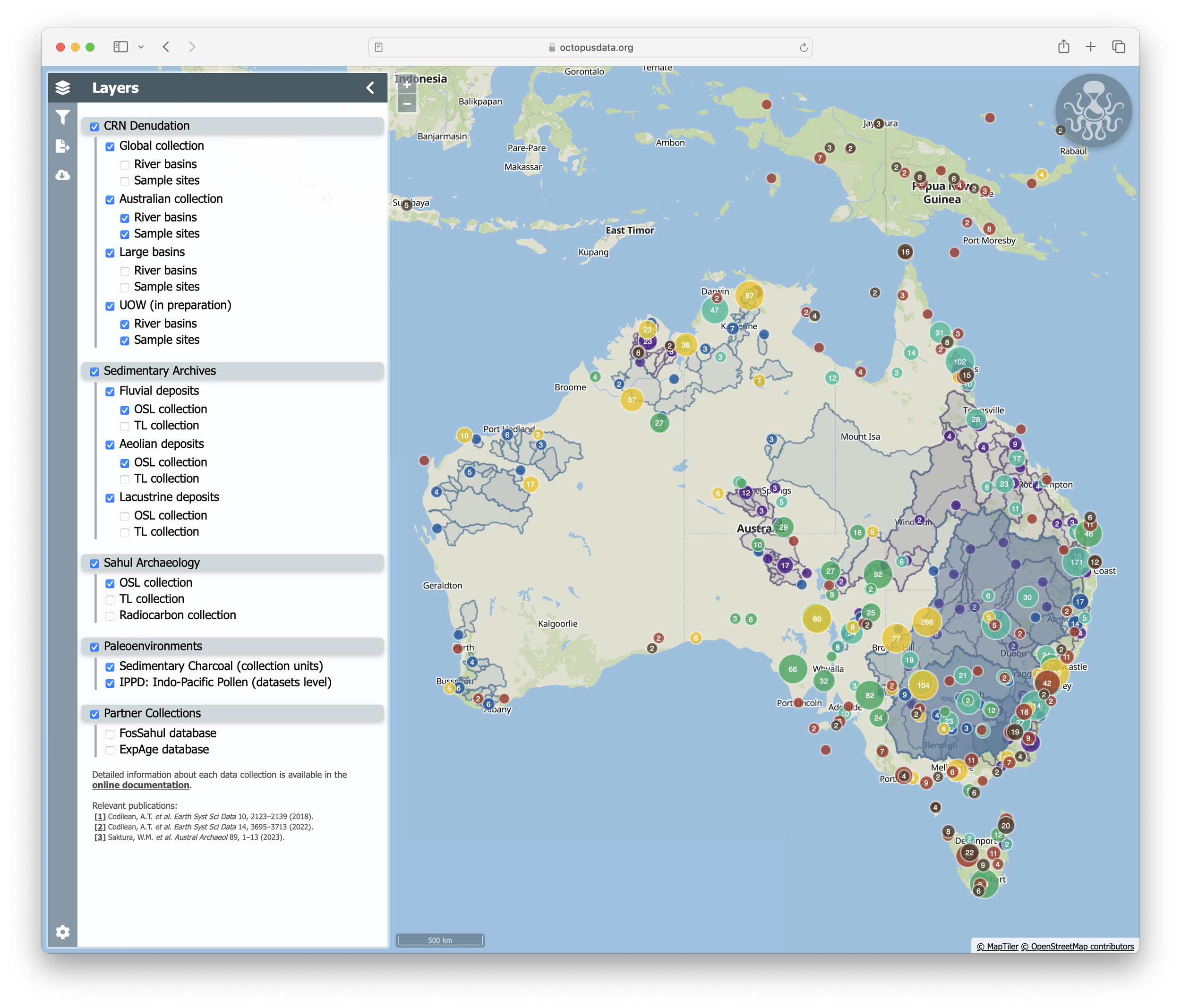OCTOPUS is an OGC-compliant, web-enabled database that enables users to visualise, query, and download geochronological data, along with associated geospatial data layers (both vector and raster). Built on open-source software, OCTOPUS supports multiple levels of integration. For example, data stored in the database can be accessed via a custom web interface, as well as through desktop GIS applications that support OGC data access protocols. The platform also allows direct export of data in various formats, including Google Earth KML and ESRI Shapefile.
OCTOPUS was developed with funding from the Australian National Data Service (ANDS), and received in-kind support from the University of Wollongong’s Information Technology Services unit between 2016 and 2019. The database was officially launched in March 2018, coinciding with the submission of a discussion paper to Earth System Science Data (ESSD). OCTOPUS is also generously supported by the ARC Centre of Excellence for Australian Biodiversity and Heritage (CABAH), with funding secured until January 2028.
The current version of the OCTOPUS database is deployed on the Google Cloud Platform.
Relevant publications:
Codilean A.T., Munack H. 2025. Updated CRN Denudation collections in OCTOPUS v2.3. Geochronology, 7, 113–122, https://doi.org/10.5194/gchron-7-113-2025
Herbert A.V., Haberle S.G., Munack H., Codilean A.T. 2025. Collaborative Effort Towards a FAIR and OPEN Indo-Pacific Pollen Database (IPPD). Data Science Journal, 24, 5, https://doi.org/ 10.5334/dsj-2025-005
Rehn E., Cadd H., Mooney S., Cohen T.J., Munack, H., Codilean, A.T., et al. 2025. The SahulCHAR Collection: A Palaeofire Database for Australia, New Guinea, and New Zealand. Earth System Science Data, 17, 2681–2692, https:// doi.org/10.5194/essd-17-2681-2025
Saktura W.M., Rehn E., Linnenlucke L., Munack H., Wood R., Petchey F., Codilean A.T., Jacobs Z., Cohen T.J., Williams A.N., Ulm S. 2023. SahulArch: A geochronological database for the archaeology of Sahul. Australian Archaeology, 89, 1-13, doi: 10.1080/03122417.2022.2159751
Codilean A.T., Munack H., Saktura W.M., Cohen T.J., Jacobs Z., Ulm S., Hesse P.P., Heyman J., Peters K.J., Williams A.N., Saktura R.B.K., Rui X., Chishiro-Dennelly K., Panta A. 2022. OCTOPUS database (v.2). Earth System Science Data, 14, 3695-3713, doi: 10.5194/essd-14-3695-2022
Codilean A.T., Munack H., Cohen T.J., Saktura W.M., Gray A., Mudd S.M. 2018. OCTOPUS: an open cosmogenic isotope and luminescence database. Earth System Science Data, 10, 2123-2139, doi: 10.5194/essd-10-2123-2018


